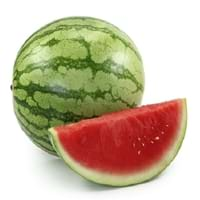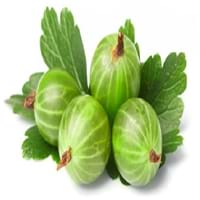Health Benefits
Anti-aging benefits, Anti-inflammatory properties, Asthma treatment, Body hydration, Cancer prevention, Digestive aid, Skin cleansing, Skin rejuvenation
Arthritis prevention, Cancer prevention, Liver health, Scurvy treatment, Ulcer prevention
General Benefits
Anti-inflammatory properties, Body hydration, Controls blood pressure, Digestive aid, Maintains healthy cholesterol level
Boosts immune system, Digestive aid, Eye care, Fights against infections, Improves blood circulation, Maintains healthy cholesterol level, Sore throat treatment, Treatment of common cold
Skin Benefits
Anti-aging benefits, Brightens and lightens complexion, Hydrates skin
Anti-aging benefits, Brightens and lightens complexion, Reduces wrinkles, Treatment of acne
Hair Benefits
Promotes longer and healthier hair, Regulates hair growth
Prevents hair loss, Promotes longer and healthier hair, Treatment of dandruff
Allergy Symptoms
Breathing difficulty, Decrease in blood pressure, Dizziness, Eczema, Hives, Runny nose, Swelling of mouth, tongue or lips, Watery eyes
Constipation, Diarrhea, Drop in blood pressure, Eczema, Facial swelling, Hives, Hoarseness, Itching, Itchy eyes, Nausea, Red rash, Redness of eyes, Runny nose, Sore eyes, Swelling of mouth, tongue or lips, Tingling sensation in mouth, Vomiting
Side Effects
Allergic reaction, Bloating, Diarrhoea, Indigestion, Intestinal gas, Nausea, Vomiting
Gastric irritation
Best Time to Eat
As a snack in the late afternoon, Don't consume at night and before bed, Eat the fresh ones, avoid mixing with any other foods, don't eat after meal., Strictly avoid empty stomach
Best if taken as a breakfast (or empty stomach), As a snack in the late afternoon, Don't consume at night and before bed, Morning time (before lunch)
Vitamin B5 (Pantothenic Acid)
Vitamin C (Ascorbic Acid)
Vitamin K (Phyllochinone)
Not Available
Lutein+Zeaxanthin
Not Available
Calories in Fresh Fruit with Peel
Not Available
Calories in Fresh Fruit without Peel
Not Available
Calories in Frozen Form
Not Available
Not Available
Calories in Dried Form
Not Available
Calories in Canned Form
Not Available
Type
Berry, Melon
Berry, Tree fruit
Varieties
Sugar Baby, Sangria, Golden Midget, Starlight, Jubilee, Starbrite, Extazy, Stars 'n' Stripes, Mickylee, Yellow Baby, Yellow Doll, Little Baby Flower, Sweet Favorite and Cream of Saskatchewan
Whinham's Industry, Green Hansa, Clark, Chataqua, Invicta, Keepsake, Lepaa Red, May Duke and Whitesmith
Color
Canary yellow, Coral red, Orange, Salmon yellow, Scarlet red, White
Green, Purple, Red, Yellow
Inside Color
Red
Yellowish Green
Origin
Southern Africa
Africa, Europe, South-West Asia
Soil Type
Sandy, Well-drained
Loamy, Well-drained
Climatic Conditions
Dry, Hot
Dry, Warm
Facts about
- Watermelon contain 91% of water.
- In Japan & Chine, watermelon is a popular gift to bring a host.
- Entire watermelon is edible, even the rinds & seeds.
- There are more than 1200 varieties grown in the world.
- Traditionally, kids were told that babies were found under gooseberry bushes.
- They are also called 'fayberries' due to an ancient belief that fairies hid in gooseberry bushes to avoid danger.
Top Producer
China
Germany
Other Countries
Algeria, Brazil, Egypt, Iran, Kazakhstan, Mexico, Spain, Turkey, United States of America
Austria, Czech Republic, Denmark, Hungary, Lithuania, Poland, Russia, Ukraine, United Kingdom
Top Importer
Germany
Not Available
Top Exporter
China
Not Available
Botanical Name
Citrullus Lanatus
Ribes uva-crispa
Synonym
Citrullus vulgaris
Ribes grossularia
Subkingdom
Tracheobionta
Tracheobionta
Division
Magnoliophyta
Magnoliophyta
Class
Magnoliopsida
Magnoliopsida
Subclass
Dillenhidae
Dillenhidae
Order
Cucurbitales
Saxifragales
Family
Cucurbitaceae
Grossulariaceae
Species
C. lanatus
R. uva-crispa
Generic Group
Gourd
Saxifrage









